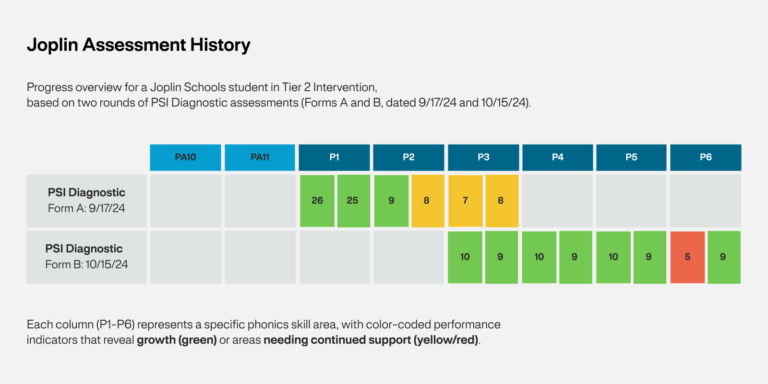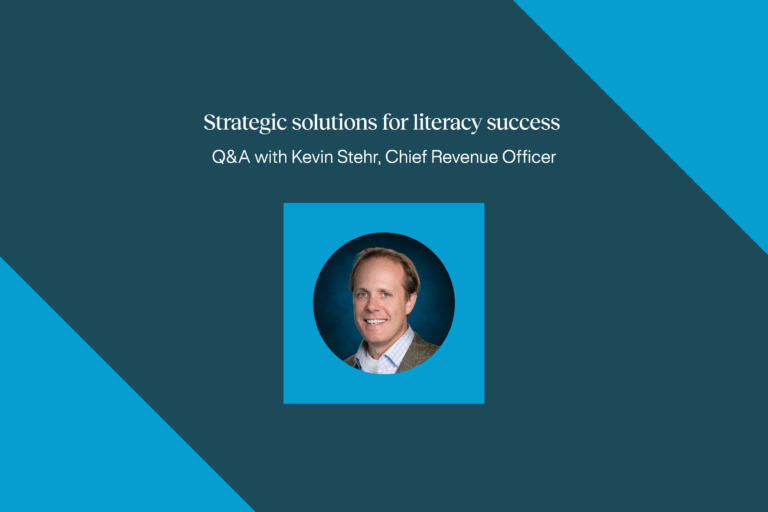Spotlight Missouri: Intervention made easier

District snapshot:
- ~7,800 students preK-12
- 10 elementary campuses
- ~60% free and reduced lunch
- ~15-17% special education population
Educators at Joplin Schools in Missouri were already familiar with 95 Percent Group’s evidence-based instructional approach. The district is in its third year using 95 Phonics Core Program™ in its kindergarten classrooms, its second year for 1st and 2nd grade classrooms, and it’s the first year for 3rd grade classrooms. They have enjoyed so much about the program including the common language and routines it offers across grade levels.
However, when they began learning that the district was adopting the 95 Literacy Intervention System™ (LIS), Joplin educators acknowledged they were feeling hesitant, wondering if the learning curve would outweigh any benefits. But as it turns out, according to Jessica Hilton, literacy specialist in the district, it was much easier to learn than they expected.
“It was the solution we didn’t know we needed, until we tried it,” she laughed.
Testing the digital intervention waters
95 Literacy Intervention System is a comprehensive digital solution designed to effectively diagnose deficits, deliver targeted instruction, and move students out of intervention as soon as possible. Although Joplin Schools are relatively new to using LIS, there is already a lot of excitement about this digital tool.
After receiving initial training on LIS in the spring of last year, some schools have begun dipping their toes in with student testing—just having completed either their first or second testing cycle. So far, they’ve found it to be a huge help in grouping kids, and storing, tracking and reporting on literacy data.
Literacy specialists at Joplin Elementary Schools all report that LIS has made testing a much quicker process, and that it offers teachers very specific information about what kids need to work on. “One thing that’s made a big difference,” began Jennifer Sanders, a K-5 literacy specialist, “is that after you test students, the system will tell you: OK, they could do skill 5-1,5-2, and 5-3 (for example). So that’s really helpful to see the exact skill our students need more practice with. It helps you to drill down to specific details.”
Coordinator of Elementary Curriculum and Instruction, Libbie Burd, weighed in on the benefits of LIS from the district point of view. “We were having trouble organizing our data for 95 Percent Group within the framework of our data warehouse,” she reported. “So LIS really struck a chord for us with the way we can now see and easily track data and progress—across the whole district—in one place.”
Data in one place, even when students are not
An additional benefit?
The ease with which they can have information as kids move from school to school within the district—a common occurrence at Joplin Schools due to a high transiency rate between their 10 elementary schools.
“It’s connected to PowerSchool,” Hilton specified. “So once we are signed into PowerSchool, it’s pretty much instant: we can see where the students are coming from—school to school—when they move, along with their previous test results and any progress they are making. Before LIS, we were having to email their old school, and ask previous teachers where students were in the curriculum. Now, as soon as it links to PowerSchool, we can get on and see their tests.”

Because we are now reporting progress on Reading Success Plans to parents, and want to show that students are growing, just being able to capture the data along the way with how students are progressing through the skills is really helpful to this process.
Libbie Burd
There is also a “notes” section in the system—a place where teachers can keep track of important details about students. Burd discussed why this is especially useful for their Special Education and English Learners (ELs).
“Our EL students used to be site-based: they learned in one location altogether. Now they are back in their “home” schools, and having the notes section is invaluable to teachers. Before LIS we were writing endless emails and having to track down paperwork to ensure that information didn’t slip between the cracks.”
It’s just the beginning
Educators at Joplin Schools are really still in the “testing it out” phase to see how it can benefit the way they group students and track data along the way. And although they have just begun to use LIS in earnest—some schools have only completed one testing cycle so far—they can already see the value it’s bringing and can continue to bring to their intervention and instruction.
When asked what they might offer to fellow educators who feel hesitant to bring something else into their already established systems, Sanders had this to say. “It’s really worth it to just try it out and give it a chance. We really felt like this was going to take a long time to figure out and make good use of, but it really wasn’t like that. It makes a huge difference in how quickly and easily you can move through testing and grouping students.”
Ready to learn more?
Here are two ways you can learn more about 95 Literacy Intervention System:
- Watch this on-demand webinar titled Knocking down obstacles to drive literacy gains
- Read about LIS on our blog: Knock down obstacles—get 5 wins for literacy intervention
Behind the scenes of real results
An inside look at how Joplin made intervention easier—and more effective.



